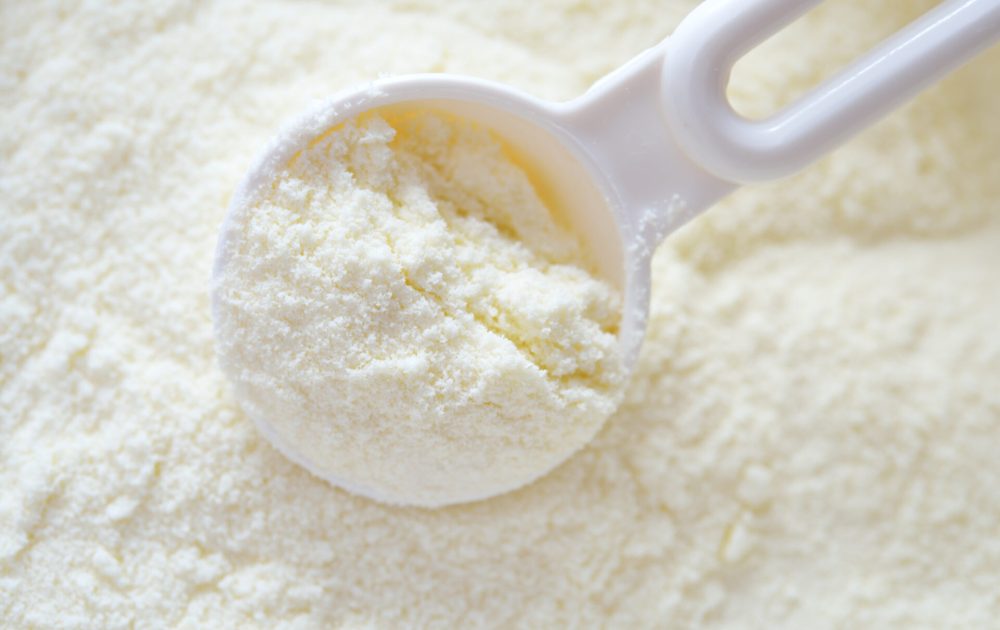Our test tells you which everyday chemicals you've recently come into contact with, and easy steps you can follow to reduce your exposure to them.
PFAS found in American infant milk formula

PFAS (Per- and polyfluorinated alkyl substances) can be detected in infant milk formula – this is the finding of research carried out by Consumer Reports in the US, who tested 41 brands of infant formula for a range of chemicals and toxins, including PFAS.
PFAS are a group of more than 10,000 chemicals that are collectively known as ‘Forever chemicals’ because of the time it takes for their chemical bonds to be broken, so they persist for a very long time. A small number of PFAS are banned or restricted, and with no consistency in legislation between countries, alternatives are quickly introduced by manufacturers without the need for rigorous screening. PFAS was found in almost all of the infant milk samples tested in this research.
The findings of this report are troubling for parents who want to provide the healthiest nutrition for their child possible, including milk formula. Filtering the water used to mix formula can help to reduce levels of some of the chemicals in water, but avoiding exposure to chemical additives used in milk formula as preservatives or flavours entirely is very hard. If you have any concerns about ingredients used in infant milk formulations ask the manufacturer for more information.
Health concerns about PFAS
Exposure to PFAS is linked to higher incidences of cancer. Occupational exposure to firefighting foam which uses PFAS is linked to higher rates of cancer in US firefighters. Closer to home, water contaminated with PFAS near a firefighting training area on the island of Jersey exposed residents to toxic levels of PFAS in their water supply and is thought to have caused cancer in some of the local residents.
Exposure to PFAS is widely thought to be carcinogenic. The international Agency for Research on Cancer (IARC) classed two groups of PFAS, PFOA and PFOS as “possibly carcinogenic to humans” in 2016. Carcinogens act on the body by attacking the immune system and inflaming body tissue which can lead to the development of diseases.
Can PFAS be avoided?
Because PFAS is so widely used it is almost impossible to avoid; you’ll find it in non-stick cookware, stain and water-resistant products, clothing, food packaging, and electronics. It enters the water course as a bi-product of manufacturing and human waste. Whilst it is possible to remove PFAS from water, the process is very costly and not a priority for most water authorities across the globe. A small town in Ilinois will be one of the first to invest in protecting its residents from PFAS in their water.
PFAS restrictions are coming into place gradually, but progress is very slow. For example, France restricted PFAS use in clothing and cosmetics in February 2025. Denmark leads the way on PFAS restrictions, driving forwards the Universal PFAS Restriction Proposal which aims to restrict or ban PFAS across the EU. The UK is lagging, with only Northern Ireland following this initiative. UK REACH, (The UK Chemicals Agency) has identified nearly 40 chemicals of ‘very high concern’ but only two chemicals in the PFAS group are restricted, PFOA and perfluorinated silane.
What can you do to reduce your exposure to PFAS?
Because PFAS use is so widespread in our everyday life, the best approach is to consider reducing your exposure to PFAS rather than trying to avoid it entirely. There are some changes you can make to reduce the number of times you might be exposed to chemicals in the PFAS group.
- Avoid food packaged with leak or greaseproof linings such as pizza boxes and ready meals. The linings typically rely on PFAS chemicals which can leach into food, especially when heated or warmed up in a microwave.
- Remove convenience food from packaging and heat using glass or metal cookware.
- Filter your water to help reduce levels of PFAS and other potentially harmful substances such as microplastics. Use a gravity fed water filter – it removes microplastics from your drinking water at the same time.
- Replace old non-stick pans, especially if they are scratched and use metal pans instead. If you prefer non-stick pans and cookware, some are manufactured using methods to prevent PFAS from escaping, unless used at extremely high temperatures for lengthy periods of time.
- Choose ‘PFAS free’ clothing where possible and avoid wearing waterproof clothing close to the skin. If you do, wear an organic cotton or wool layer against the skin. For ideas about children’s waterproof clothing read more in our post.
- Take your shoes off at the door to reduce chemicals coming into your home.
Image credit: Bohbeh creations
The information on our website should not be used as an alternative to medical advice from your doctor or other professional healthcare provider. If you have any specific questions about any medical matter, you should consult your doctor or other professional healthcare provider.